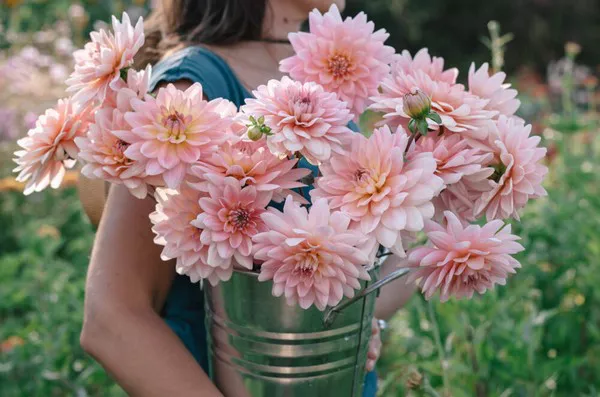Flowers are undeniably one of nature’s most beautiful creations, admired for their vibrant colors, delicate petals, and intoxicating fragrances. Whether adorning a tabletop, enhancing a wedding bouquet, or bringing life to a room, flowers play a significant role in various aspects of human life. However, one common question among flower enthusiasts is, “How long can flowers stay out of water?”
Understanding the lifespan of cut flowers outside of water is crucial for maintaining their freshness and beauty. In this comprehensive guide, we delve into the factors influencing flower longevity and provide practical tips to ensure your blooms last as long as possible.
Factors Affecting Flower Longevity
Before delving into specific timelines, it’s essential to understand the factors that influence how long flowers can survive without water:
1. Type of Flower: Different flowers have varying lifespans once removed from water. Some varieties, like roses and chrysanthemums, tend to last longer, while delicate blooms such as hydrangeas and lilies may wilt more quickly.
2. Environmental Conditions: Temperature, humidity, and air circulation significantly impact the longevity of cut flowers. Exposure to high temperatures can accelerate dehydration, leading to premature wilting, while overly humid conditions may promote bacterial growth and decay.
3. Stem Condition: The condition of the flower stems also plays a crucial role. Properly trimmed and hydrated stems are better equipped to absorb water and nutrients, extending the flower’s lifespan.
4. Water Quality: If flowers are removed from water for an extended period, the quality of the water they were previously submerged in can affect their longevity. Stagnant or contaminated water may introduce harmful bacteria, hastening decay.
5. Handling and Transportation: Careful handling and transportation practices are essential to minimize damage to flowers. Rough handling, exposure to extreme temperatures, and prolonged exposure to sunlight can all contribute to a shortened vase life.
How Long Can Flowers Stay out of Water?
While the longevity of cut flowers outside of water varies depending on the factors mentioned above, here’s a general guideline for some popular flower varieties:
1. Roses: With proper care, roses can typically last 6-12 hours outside of water. However, this can vary based on factors such as temperature and humidity.
2. Carnations: Carnations are relatively resilient and can last 12-24 hours without water.
3. Lilies: Lilies are more delicate and may only last 2-4 hours once removed from water.
4. Gerbera Daisies: Gerbera daisies have a shorter lifespan outside of water, typically lasting 4-8 hours.
5. Tulips: Tulips can last 4-12 hours without water, depending on environmental conditions and stem health.
It’s important to note that these are approximate timeframes and can vary based on individual circumstances. Additionally, certain flower preservation techniques, such as using floral preservatives or rehydrating stems, can extend the lifespan of cut flowers outside of water.
Tips for Extending Flower Longevity
While flowers inevitably wilt once removed from water, there are several steps you can take to prolong their freshness:
1. Keep Them Cool: Store cut flowers in a cool, shaded area to slow down the rate of water loss. Avoid placing them near heat sources or in direct sunlight.
2. Rehydrate Stems: If possible, recut the stems of the flowers at an angle and place them in fresh water as soon as you can. This helps remove air bubbles and allows for better water absorption.
3. Use Floral Preservatives: Adding floral preservatives to the water can provide nutrients and inhibit bacterial growth, extending the life of cut flowers.
4. Mist the Flowers: Lightly misting the petals and foliage of cut flowers can help prevent dehydration and keep them looking fresh.
5. Choose Longer Lasting Varieties: When selecting flowers for arrangements or bouquets, opt for varieties known for their longevity, such as roses, carnations, and alstroemeria.
6. Avoid Overhandling: Minimize handling of cut flowers to prevent damage to delicate petals and stems. Use clean, sharp tools when trimming stems to avoid crushing or bruising.
7. Change the Water Regularly: If flowers are left in water for an extended period, change the water every 2-3 days to prevent bacterial buildup and maintain water quality.
By following these tips and guidelines, you can maximize the lifespan of cut flowers and enjoy their beauty for as long as possible.
Conclusion
While the question, “How long can flowers stay out of water?” doesn’t have a one-size-fits-all answer, understanding the factors influencing flower longevity can help you make informed decisions when caring for cut flowers. By paying attention to environmental conditions, stem health, and proper handling techniques, you can extend the life of your blooms and continue to enjoy their beauty long after they’ve been cut. With a little care and attention, even the most delicate flowers can retain their freshness and vibrancy, adding joy and elegance to any setting.


